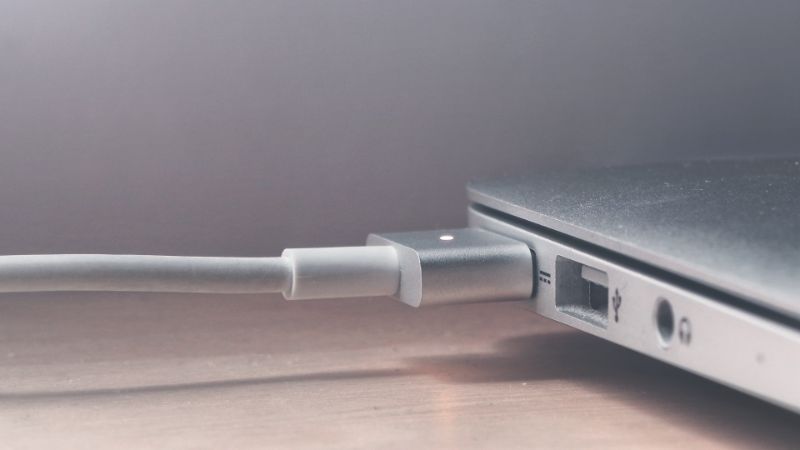
One of the most common laptop issues is when a laptop won’t charge. When a laptop won’t charge, it can be difficult to determine the cause. It’s important to understand the different components involved in the charging process, and to identify any potential issues. This article will explain the basics of laptop charging and provide some common troubleshooting steps for when a laptop won’t charge.
Content of the page
Common Symptoms of a Laptop Not Charging
When a laptop won’t charge, it is usually accompanied by one or more of the following symptoms:
- The laptop’s battery does not charge or only partially charges.
- The laptop does not power on.
- The laptop does not recognize the power adapter.
- The laptop makes a buzzing sound when the power adapter is connected.
- The laptop’s power light is blinking/flashing.
Possible Causes for a Laptop Not Charging
There are several possible causes for a laptop not charging. Some of the most common causes include the following:
- The power adapter is faulty or not properly connected.
- The charging cable is faulty or not properly connected.
- The laptop’s battery is faulty or not properly connected.
- The power outlet is not providing enough power.
Basic Troubleshooting Steps
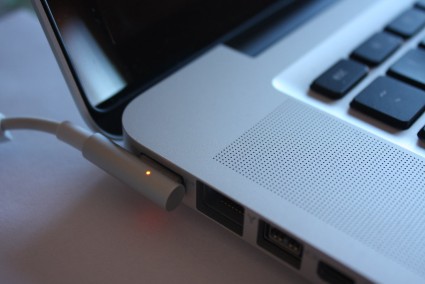
| Check the Power Adapter. |
| Inspect the Power Adapter for Physical Damage. |
| Test the Power Adapter with a Multimeter. |
| Try a Different Power Outlet. |
| Inspect the Charging Cable. |
| Check for Damaged or Frayed Wires. |
| Try a Different Charging Cable. |
| Examine the Laptop Battery. |
| Check for Physical Damage on the Battery. |
| Remove and Reinsert the Battery. |
| Reset the Battery. |
Before attempting more advanced troubleshooting steps, it’s important to go through the basic troubleshooting steps. This will help to determine if the issue is related to the power adapter, charging cable, or laptop battery.
Check the Power Adapter
The first step is to check the power adapter. Make sure that the power adapter is properly connected to the laptop and that there is no physical damage to the adapter.
Inspect the Power Adapter for Physical Damage
First, inspect the power adapter for any physical damage. It is important to check the power adapter for any visible signs of damage, such as frayed wires, cracked plastic, or exposed components. If there is any physical damage to the power adapter, it should be replaced immediately.
Test the Power Adapter with a Multimeter
Next, it is important to test the power adapter with a multimeter. This will help to determine if the power adapter is providing enough power to the laptop. To do this, connect the multimeter to the power adapter and measure the voltage. If the voltage is below the specified voltage for the laptop, the power adapter should be replaced.
Try a Different Power Outlet
It is also a good idea to try a different power outlet. If the power outlet is not providing enough power, the laptop may not be able to charge properly. If the laptop charges when connected to a different power outlet, the original power outlet may not be providing enough power.
Inspect the Charging Cable
The next step is to inspect the charging cable. Make sure that the charging cable is properly connected to the laptop and that there is no physical damage to the cable.
Check for Damaged or Frayed Wires
It is important to check the charging cable for any visible signs of damage, such as frayed wires or exposed components. If there is any physical damage to the cable, it should be replaced immediately.
Try a Different Charging Cable
If the charging cable is not the issue, it is a good idea to try a different charging cable. If the laptop charges when connected to a different charging cable, the original cable may be faulty.
Examine the Laptop Battery
The last step is to examine the laptop battery. Make sure that the battery is properly connected to the laptop and that there is no physical damage to the battery.
Check for Physical Damage on the Battery
It is important to check the laptop battery for any visible signs of damage, such as cracks or exposed components. If there is any physical damage to the battery, it should be replaced immediately.
Remove and Reinsert the Battery
If the battery is not the issue, it is a good idea to remove and reinsert the battery. This can help to reset the battery and get the laptop charging again.
Reset the Battery
If the above steps do not work, it may be necessary to reset the battery. This can be done by disconnecting the power adapter and removing the battery from the laptop. Then, wait at least 10 minutes before reinserting the battery and reconnecting the power adapter. This can help to reset the battery and get the laptop charging again.
Software and Settings
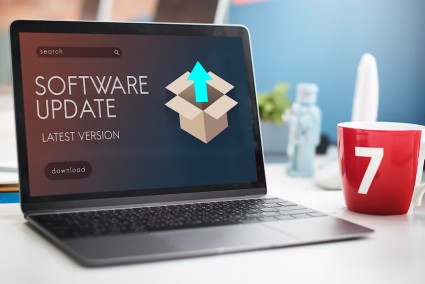
| Update the Operating System. |
| Adjust Power and Battery Settings. |
| Run a System Diagnostic. |
Update the Operating System
Before attempting any advanced solutions, users should always start by running an Operating System (OS) update. This is a simple process that requires a few clicks and can be done quickly. After the update is installed, users can then check to see if their laptop is charging.
To update the OS, users should:
- Navigate to their laptop’s “Settings” menu
- Click the “Updates & Security” tab
- Click the “Check for Updates” button
- Wait for the update to complete
If the laptop is still not charging after the update is complete, users should move on to the next solution.
Adjust Power and Battery Settings
The laptop’s power and battery settings are some of the most important settings that can affect the charging process. Users should make sure that the power settings are properly configured to ensure that their laptop is charging correctly.
To adjust the power and battery settings, users should:
- Navigate to their laptop’s “Settings” menu
- Click the “System” tab
- Click the “Power & Sleep” tab
- Adjust the settings as needed
For more information on how to properly configure the laptop’s power and battery settings, users should refer to their laptop’s user manual.
Run a System Diagnostic
If the laptop is still not charging after adjusting the power and battery settings, users should run a system diagnostic to identify any potential issues. System diagnostics can be done quickly and easily, and they can help users identify any potential problems that may be causing their laptop to not charge correctly.
To run a system diagnostic, users should:
- Navigate to their laptop’s “Settings” menu
- Click the “Update & Security” tab
- Click the “Troubleshoot” tab
- Click the “Run System Diagnostics” button
- Wait for the process to complete
If the system diagnostic identifies any potential issues, users should follow the instructions provided to resolve the issue. If the diagnostic does not identify any issues, users should move on to the next solution.
Advanced Solutions
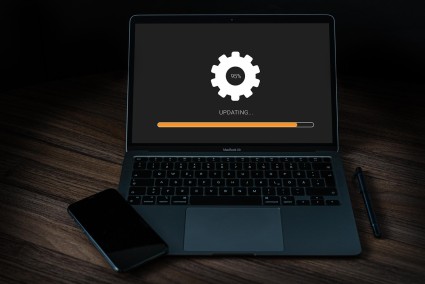
| Perform a Hard Reset. |
| Update the BIOS. |
| Replace the Laptop Battery. |
| Seek Professional Assistance. |
Perform a Hard Reset
If the laptop is still not charging after running a system diagnostic, users should perform a hard reset. A hard reset is a process of resetting the laptop to its factory settings. This process can help to resolve any potential issues that may be causing the laptop to not charge correctly.
To perform a hard reset, users should:
- Navigate to their laptop’s “Settings” menu
- Click the “Update & Security” tab
- Click the “Reset this PC” tab
- Follow the instructions to complete the reset process
Once the hard reset is complete, users should check to see if the laptop is charging correctly.
Update the BIOS
The BIOS is the most important component of the laptop and is responsible for controlling the hardware. If the BIOS is out of date, it can cause issues with the laptop’s charging process. Users should make sure that their BIOS is up to date to ensure that their laptop is charging correctly.
To update the BIOS, users should:
- Navigate to their laptop’s “Settings” menu
- Click the “Update & Security” tab
- Click the “Advanced Options” tab
- Click the “Update BIOS” button
- Follow the instructions to complete the update process
Once the BIOS update is complete, users should check to see if the laptop is charging correctly.
Replace the Laptop Battery
If the laptop is still not charging after updating the BIOS, it may be time to replace the laptop battery. Over time, laptop batteries can become worn out and will eventually need to be replaced. Replacing the battery is a simple process that can be done quickly and easily.
To replace the laptop battery, users should:
- Purchase a new laptop battery
- Follow the instructions provided with the new battery to install it
- Check to see if the laptop is charging correctly
Seek Professional Assistance
If none of the solutions above have worked, it may be time to seek professional assistance. Professional technicians have the expertise and experience to diagnose and fix any issues that may be causing the laptop to not charge correctly.
Preventing Charging Issues
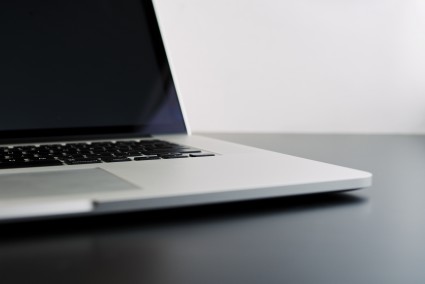
| Tips |
|---|
| Properly Handle and Store the Laptop Charger. |
| Avoid Overcharging the Battery. |
| Keep the Laptop Clean and Dust-Free. |
| Maintain a Healthy Battery Life. |
Properly Handle and Store the Laptop Charger
One of the best ways to prevent charging issues is to properly handle and store the laptop charger. The laptop charger should be handled with care and stored in a safe place when it is not in use. This will help to ensure that the charger is not damaged or lost, which can lead to charging issues.
Avoid Overcharging the Battery
Another way to prevent charging issues is to avoid overcharging the battery. Overcharging the battery can cause it to become damaged and will eventually lead to charging issues. Users should make sure that their laptop is not plugged in for too long and that the battery is not overcharged.
Keep the Laptop Clean and Dust-Free
Keeping the laptop clean and dust-free is also important for preventing charging issues. Dust and debris can accumulate inside the laptop and cause it to overheat, which can lead to charging issues. Users should make sure to keep their laptop clean and dust-free to ensure that it is functioning properly.
Maintain a Healthy Battery Life
To prevent charging issues, users should also make sure to maintain a healthy battery life. This means avoiding overcharging the battery and using it only when necessary. Users should also make sure to charge the battery regularly to ensure that it is functioning correctly.
Conclusion
Laptop charging issues can be a frustrating problem to deal with, but with the right knowledge and tools, they can be easily resolved. By following the steps outlined in this article, users should be able to identify and resolve any charging issues their laptop may be experiencing. Additionally, users should take steps to prevent charging issues by properly handling and storing the laptop charger, avoiding overcharging the battery, keeping the laptop clean and dust-free, and maintaining a healthy battery life.
